8 Effective Solutions for ERROR_HANDLE_EOF

Resolving the ERROR_HANDLE_EOF issue is simpler when you follow this DIY troubleshooting guide.
You may encounter Windows update and driver installation errors that cause the process to halt unexpectedly. In these scenarios, the installer is unable to read the entire installation package.
I recreated the issue in a controlled environment and tested various troubleshooting methods. Here are the solutions that effectively worked for me!
What Is ERROR_HANDLE_EOF?
ERROR_HANDLE_EOF is a Windows error indicating that a software code, package installer, or media player is trying to read a file past its last byte. This error typically occurs when the problem software anticipates more data than what is available in the source file or software code.
Here’s a detailed description:
ERROR_HANDLE_EOF: 38 (0x26) Reached the end of the file.
This error commonly appears during:
- Installing Windows updates via a package installer, particularly when applying Service Pack upgrades to Windows 7 or earlier versions.
- Disruptions during large file write operations.
- Corruption within the Windows file system.
- Issues accessing the Registry.
- Intermittent hard drive failures causing numerous disk sector errors.
- Incomplete media files that are being accessed by a media player.
- File truncation within system logs.
- File corruption during application installations.
- Incomplete file transfers.
- Antivirus software scanning files.
- A malware program faking a read/write event for a source file.
- Reaching the end of the file during backup or restore operations.
- Attempting to read a corrupted file.
How To Fix ERROR_HANDLE_EOF
Let’s delve into the effective methods to resolve error code 38 (0x26), “Reached the end of the file.”
Try These Basic Fixes First
- Restart your device: The first step is to reboot your PC and attempt the operation again to see if the issue resolves itself.
- Clear the software distribution folder:
- Open the Start menu and type Command Prompt.
- Right-click on Command Prompt and choose Run as administrator.
- In the terminal, input
net stop wuauservand press Enter. This will stop the Windows Update service. - Type
del /f /q %windir%\SoftwareDistributionand hit Enter. This will clear all files and folders within the SoftwareDistribution directory. - Enter
net start wuauservand press Enter. This will restart the Windows Update service.

- Close the Command Prompt window.
Windows Update will begin populating the directory with the required files.
- Redownload the source file: In many instances, the installer or updater operates correctly, and the issue lies with the file being accessed. Remove the existing file and download a fresh copy. You may consult the file developer for insights concerning the ERROR_HANDLE_EOF bug.
- Use alternative software: For files related to databases, multimedia, etc., consider using a different tool for reading and writing those files.
Fix File Permissions Issues
- Locate the source file, right-click, and select Properties from the context menu.
- If using Windows 11, click Show more options after right-clicking.
- You will see the File Name Properties dialog.
- Navigate to the Security tab.
- Select your user name listed under the Group or user names section.
- Check for your Allow and Deny permissions.
- The following file permissions should be permitted:
- Modify
- Read & execute
- ReadWrite
- If the required permissions are already enabled, skip this troubleshooting step and proceed to the next.
- If not, click the Edit button.

- Again select your User Account in the Permissions for File Name dialog box.
- Uncheck all boxes in the Deny column.
- Check all boxes in the Allow column.
- Click Apply and OK across all dialog boxes.
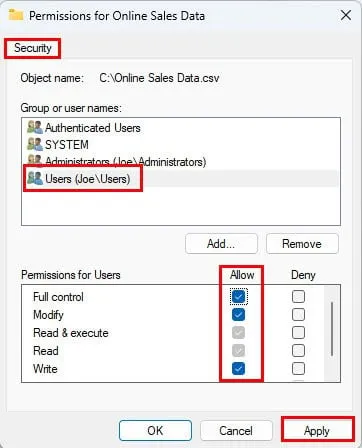
- Restart your PC.
Check for and Fix Disk Issues
If ERROR_HANDLE_EOF arises from HDD errors, Error checking can assist. Here’s how:
- Navigate to the drive where the source file resides.
- Right-click and select Properties.
- Go to the Tools section in the Properties dialog.
- Click on the Check button found in the Error checking section.
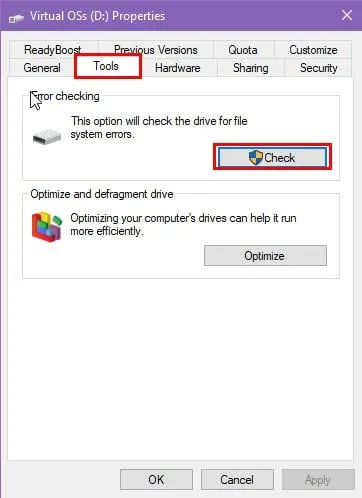
- Select Scan drive on the pop-up warning.
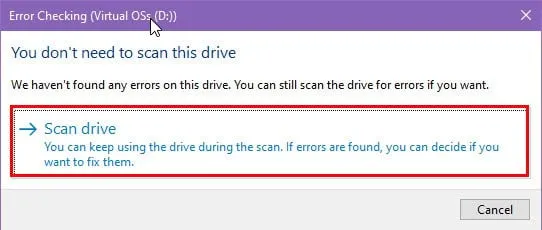
- Allow the Windows Error Checking tool to locate and repair bad sectors.
Now, try accessing or running the same file to check if the issue persists.
Fix Windows File System With SFC and DISM Scans
Perform an SFC Scan
- Click on the Start menu button, then type CMD.
- Select Run as administrator on the right side.
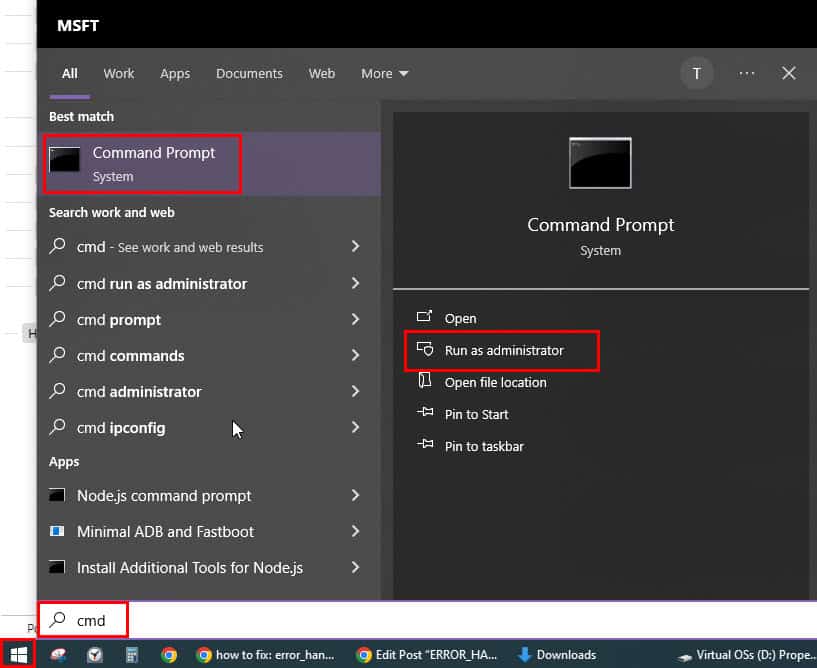
- Type
sfc /scannowin the terminal and press Enter.
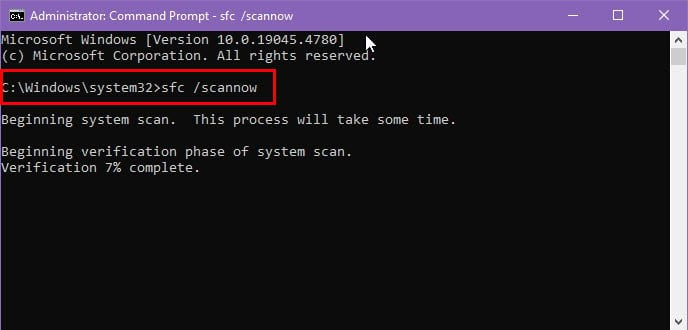
- The scan duration may vary based on the size of the Windows installation drive.
- Once the scan concludes, it will display one of the following results:
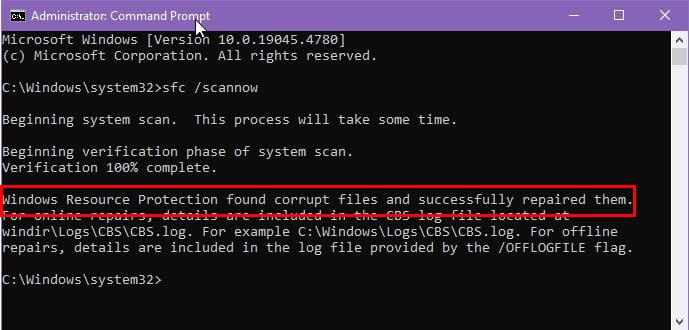
- Windows Resource Protection did not find any integrity violations: No further action needed.
- Windows Resource Protection found corrupt files and successfully repaired them: SFC scan rectified file system errors.
- Windows Resource Protection found corrupt files but couldn’t repair them: Proceed to the DISM scan step below.
Run DISM Scan
- Input the following command in the same Command Prompt terminal and press Enter:
DISM /Online /Cleanup-Image /RestoreHealth
- The terminal will begin processing the DISM scan.

- Two progress bars will show on the terminal.
- Once you see the message:
- Completed successfully
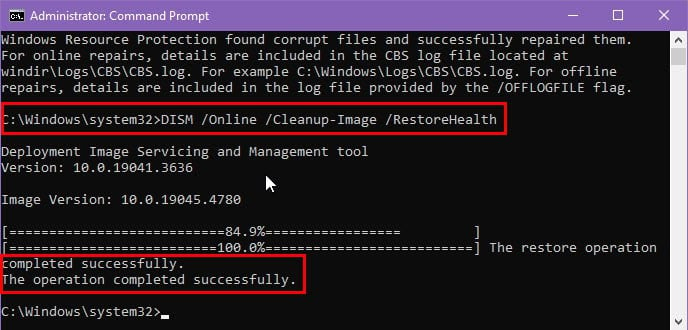
- Restart your PC.
Run Windows Update Troubleshooter
If you frequently encounter the “38 (0x26) Reached the end of the file.” error while updating Windows, follow these troubleshooting steps:
- Press the Windows + I keys simultaneously to open the Settings app.
- Select the System menu in the left navigation panel.
- Scroll down on the right within the System window, locate Troubleshoot, and click on it.

- Click on Other troubleshooters found below the Options section.
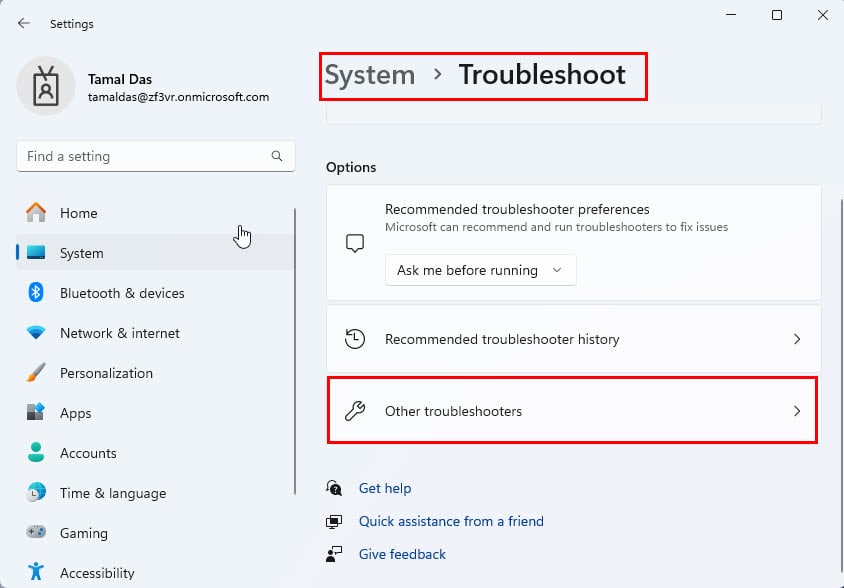
- Find the Windows Update troubleshooter in the Most frequent section on the right.
- Click Run.
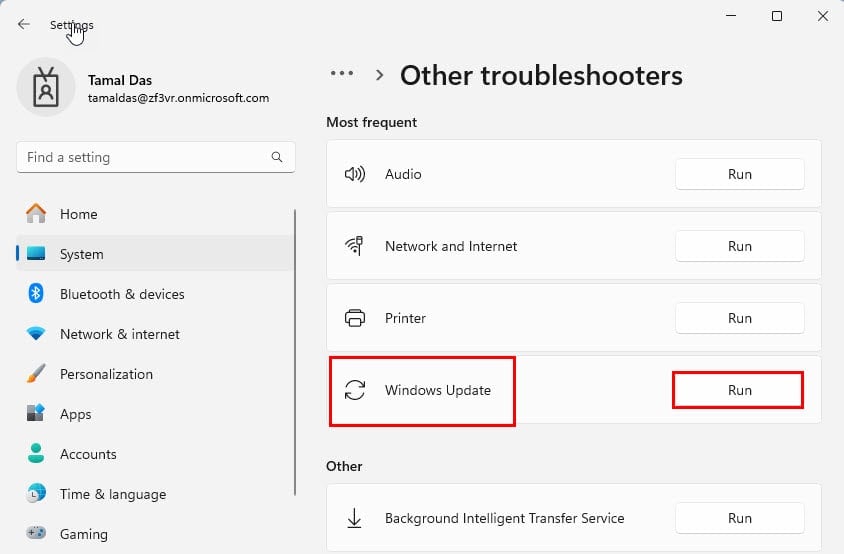
- The troubleshooter will begin diagnosing and resolving the issue.
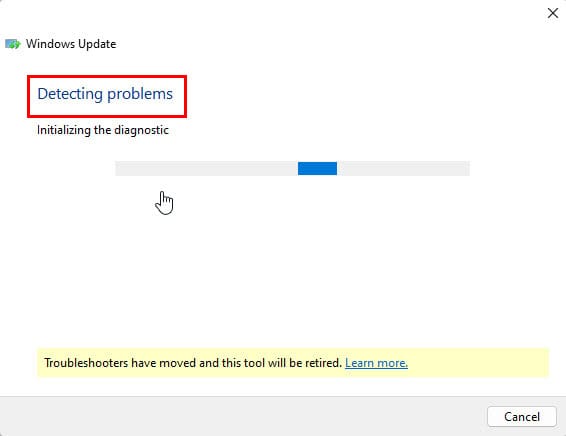
- After receiving the Troubleshooting has completed dialog, attempt to update Windows again.
- If the update succeeds, click Yes and then select Close.
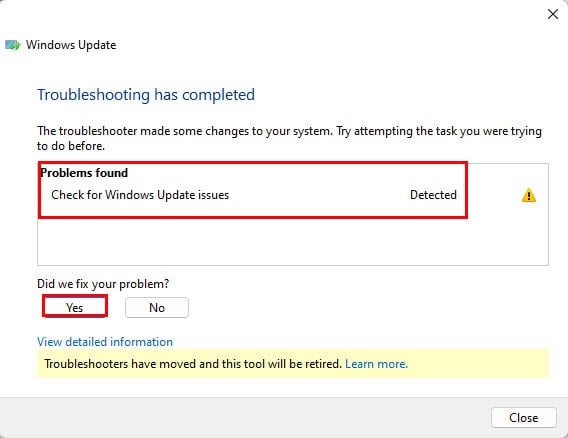
- If the solution didn’t work, click No and then select Close the troubleshooter.
Apply Service Pack Updates Manually
If you see ERROR_HANDLE_EOF on a Windows 7 PC, particularly while installing a Service Pack update, try this method. You can manually apply the Service Pack update as a workaround:
- Visit the Microsoft Update Catalog to download a compatible Service Pack update for your Windows 7 PC.
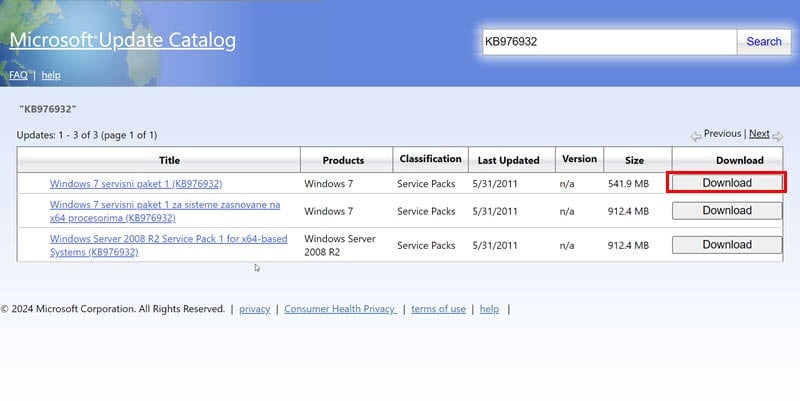
- Double-click the installer and carefully follow all on-screen instructions.
- Your PC may restart several times during the Service Pack update procedure.
Restore the PC to a Previous Configuration
If you often back up your system, you can utilize a Windows System Restore Point to revert your PC configuration to a previous functioning state:
- Press the Windows + R keys together to access the Run command.
- Type
rstrui.exein the Open field and press Enter.
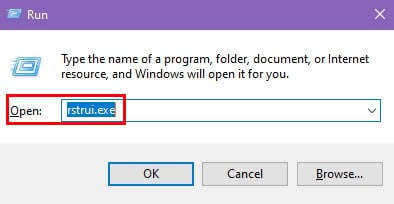
- The System Restore wizard will launch.
- Select the Choose a different restore point option and click Next.
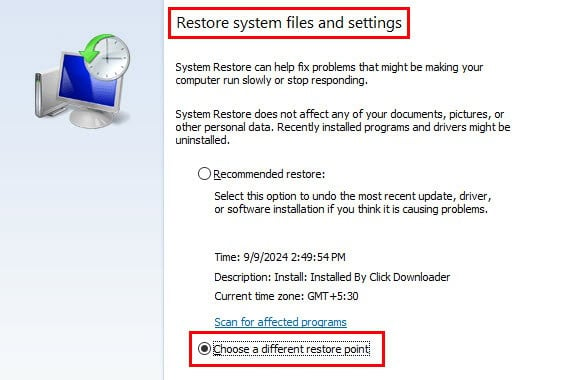
- Select a Restore Point from the subsequent table and click Next.

- Click Finish to close the wizard and begin restoring the PC.

Reset the PC
You may need to reset your device if you continue to encounter the ERROR_HANDLE_EOF error intermittently, even after various troubleshooting attempts. Here’s how:
- Click the Windows flag or Start button to locate the Power menu.
- Hold down the Shift key and click on Power.
- Keep the Shift key pressed.
- From the Power context menu, select Restart.

- Keep pressing the Shift key until you see the manufacturer’s logo or POST.
- Release the Shift key.
- Windows will enter WinRe.
- Click Troubleshoot on the Continue screen.
- Within the Troubleshoot menu, select Reset this PC.

- You can choose from the following options:
- Keep my files: Windows will retain your personal files but will remove applications.
- Remove everything: This option will delete all content.

- You will have the choice to reinstall Windows as follows:
- Cloud download: Ideal for those with a reliable and fast internet connection.
- Local reinstall: Choose this if your connection is slow or unavailable.
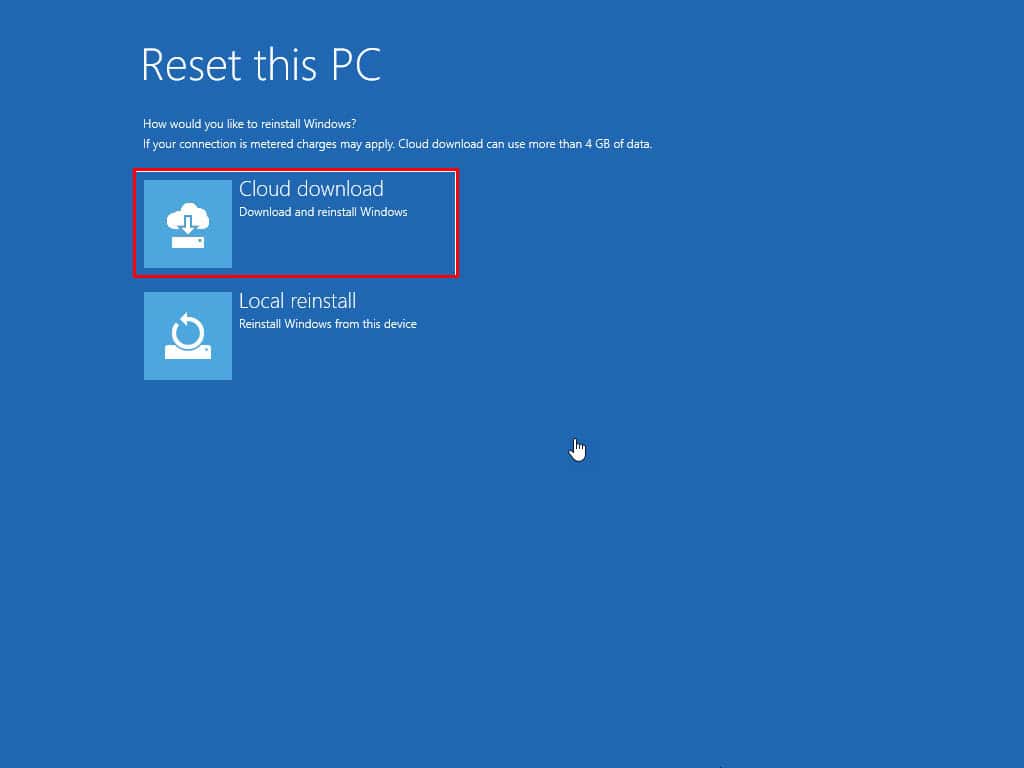
- The next screen will ask you to finalize the process. Click Reset to confirm.
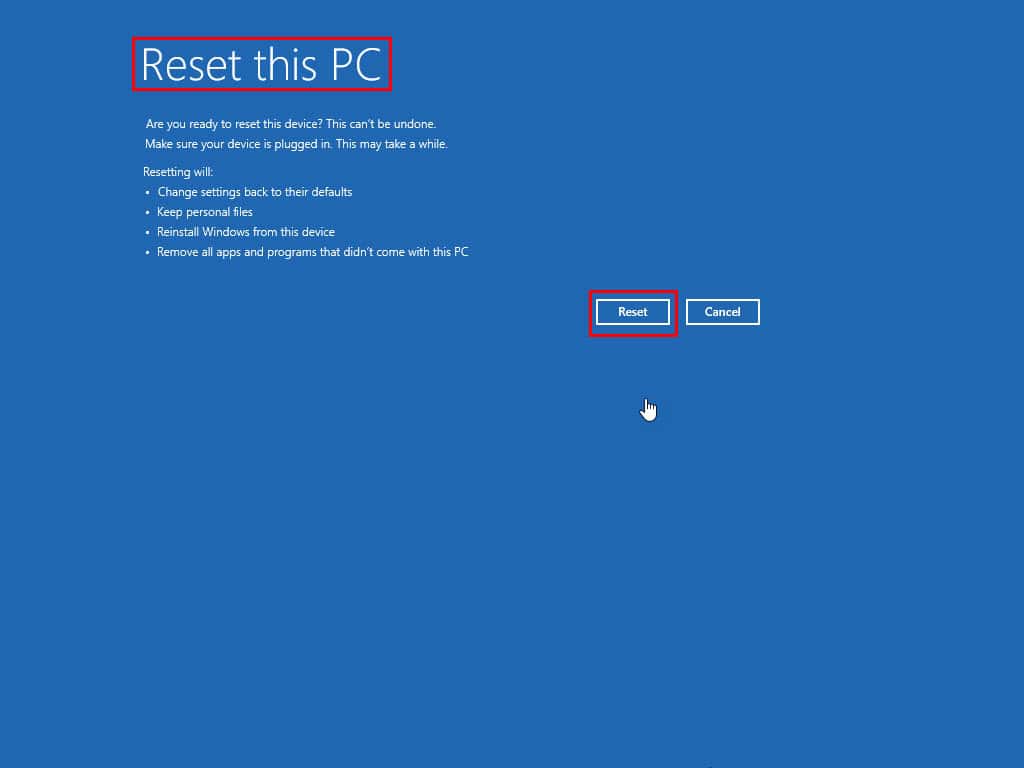
- After this, follow the on-screen instructions to reset your device successfully.
Summary
Now you are equipped with the knowledge to fix ERROR_HANDLE_EOF on any Windows PC.
It’s advisable to follow the troubleshooting suggestions in the order presented to resolve the issue promptly.


Leave a Reply